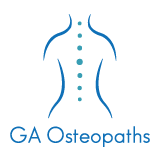Joint Pain
GA Osteopaths treat joint pain commonly. There are many causes of joint pain with many different approaches of treatment. GA Osteopaths will take a full case history in order to determine with your input, the best treatment approach to help you.
Joint pain is a very common problem with many possible causes – but it’s usually a result of injury or arthritis.
In older people, joint pain that gets steadily worse is usually a sign of osteoarthritis. It may affect just one joint, or many. See your GP if you have persistent symptoms of osteoarthritis.
The information and advice on this page shouldn’t be used to self-diagnose your condition, but may give you a better idea of what’s causing your pain.
Pain in just one joint
Knee pain
The knee joint is probably the most frequently damaged joint and is particularly vulnerable as it takes the full weight of your body.
However, knee pain isn’t always a joint problem. Learn about the most common causes of knee pain and what you should do.
Inflammation of the joint lining
If you’ve injured the joint recently and it suddenly becomes painful again, the thin layer of tissue lining the joints and tendons may be inflamed – a condition called traumatic synovitis. It usually doesn’t cause any redness or heat.
You should be able to manage injury-related swelling at home with anti-inflammatories, an icepack and rest.
Gout or pseudogout
If the skin over the joint is hot and red, and the pain comes in repeated attacks, the cause is likely to be either gout or pseudogout.
Both conditions are types of arthritis.
Gout usually affects the joint of the big toe first, before affecting other joints. It’s important to correctly diagnose gout, as treatment will prevent future attacks of joint pain and disability.
Pseudogout is a similar condition to gout, but usually affects the knee joint first.
See your GP if you think you have either condition.
Damage to the cartilage at the back of the kneecap
Knee pain that feels worse when going up or down stairs could be a sign of a damaged kneecap – a condition called chondromalacia patellae. This shouldn’t cause any redness or heat around the knee.
The cause isn’t really understood, but it can be linked to overuse of the knee.
You can treat this problem yourself with anti-inflammatories, an icepack and rest.
Bleeding into the joint space
If you’ve recently had an injury to the knee joint, such as a torn ligament or knee fracture, it may cause bleeding into the joint spaces. This is known as haemarthrosis.
This is more likely to happen to people on anticoagulants, such as warfarin.
Signs of haemarthrosis are:
- swelling of the knee
- warmth
- stiffness and bruising, which occur soon after the injury
You should go to hospital immediately for treatment if you have a very swollen knee.
Less common causes
Sudden pain in a joint is less commonly caused by:
- a fracture – read about a broken arm or wrist, broken leg, broken ankle or hip fracture
- reactive arthritis – which usually develops after an infection and tends to affect young adults
- psoriatic arthritis – a type of arthritis that affects up to one in five people with psoriasis
- rheumatoid arthritis – which can start in just one joint, with the pain coming and going
- Osgood-Schlatter’s disease – swelling and tenderness over the bony bump just below the kneecap
Rarely, the cause may be:
- septic arthritis – a serious condition that causes a painful, hot, swollen joint that you won’t be able to move (sometimes with fever) – see your GP urgently or go to A&E
- haemophilia – an inherited condition that affects the blood’s ability to clot
- a tropical infection
- cancer
- crumbling of the bone (avascular necrosis) – caused by a lack of blood supply
- repeated dislocation of the joint
Pain in many joints
Rheumatoid arthritis
Rheumatoid arthritis is another type of arthritis that causes pain and swelling in the joints – usually the hands, feet and wrists.
The pain may come and go in the early phases, with long periods between attacks.
It can leave you feeling generally unwell and tired. Read more about the symptoms of rheumatoid arthritis.
Psoriatic arthritis
Psoriatic arthritis affects up to one in five people with psoriasis. This type of arthritis is unpredictable, but flare-ups can usually be managed with treatment.
Like other types of arthritis, it means that one or more of your joints are inflamed and become swollen, stiff, painful and difficult to move.
A viral infection that causes arthritis
Examples of viral infections which can cause pain in the joints and symptoms of a fever include:
- viral hepatitis – liver inflammation caused by a virus
- rubella – a viral infection that used to be common in children
A disease of the connective tissue
Widespread joint pain is sometimes a sign of a disease that affects almost all the organs of the body, such as:
- lupus – where the immune system mistakenly attacks healthy cells, tissue and organs
- scleroderma – where the immune system attacks connective tissue underneath the skin, causing hard, thickened areas of skin
Less common causes
Widespread joint pain can less commonly be caused by:
- a rarer type of arthritis – such as ankylosing spondylitis, juvenile arthritis or reactive arthritis
- Behçet’s syndrome – a rare and poorly understood condition that causes inflammation of the blood vessels
- Henoch-Schönlein purpura – a rare condition, usually seen in children, that causes blood vessels to become inflamed
- cancer
- some treatments – including steroid therapy, isoniazid and hydralazine
- hypertrophic pulmonary osteoarthropathy – a rare disorder that causes clubbing of the fingers, seen in people with lung cancer
- sarcoidosis – a rare condition that causes small patches of tissue to develop in the organs
